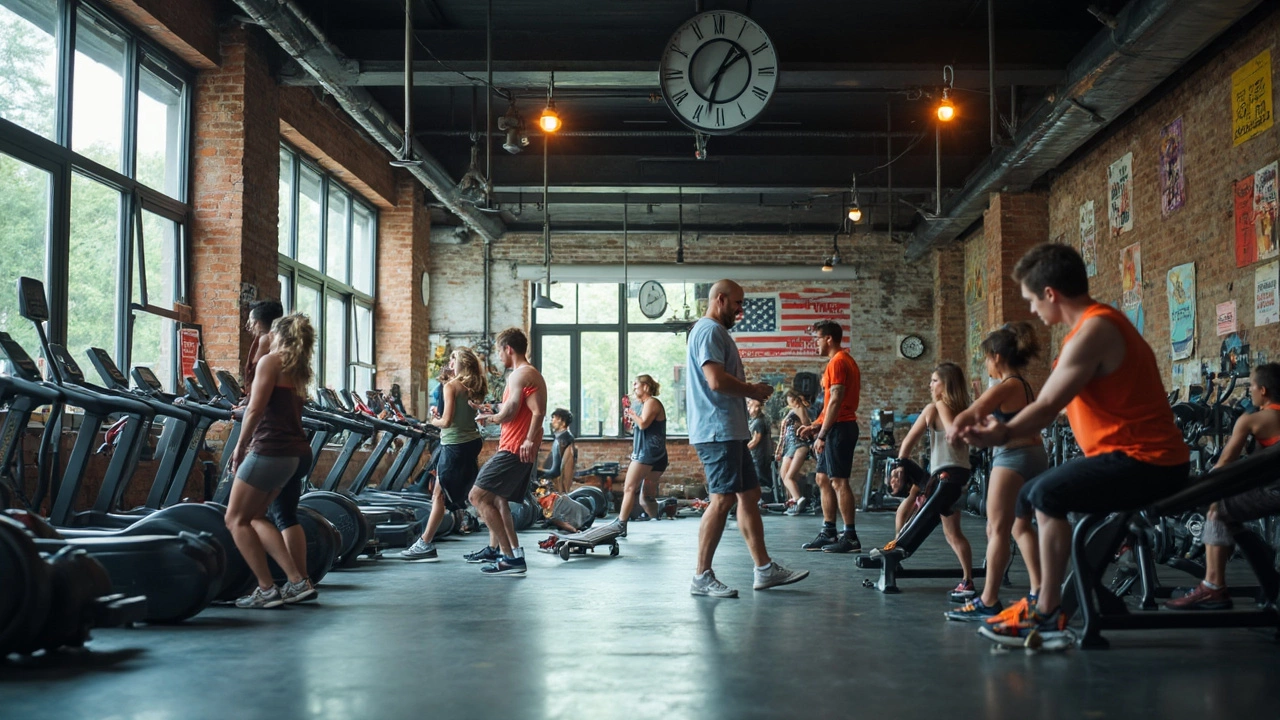
How to Nail a Full‑Body Gym Session in Just One Hour
If you only have 60 minutes, you can still hit every major muscle group and leave the gym feeling accomplished. The trick is to cut the fluff, stick to compound moves, and keep rest periods short. Below is a no‑nonsense plan that fits into a typical work‑day schedule without sacrificing results.
Pick the Right Structure
Start by deciding on a workout split that matches the time you have. A full‑body routine works best for a one‑hour slot because you train each muscle once, so you don’t need a separate day for legs, push, or pull. If you prefer a split, try an upper‑lower rotation, doing upper body on Monday, lower body on Tuesday, and repeat.
Use the "5‑5‑5" method – five sets of five reps – for big lifts like squats, bench press, or deadlift. This format packs strength work into a tight window and keeps the pace moving. The key is to pick a weight you can handle for all five reps and rest no longer than 90 seconds between sets.
Core Exercise List for a One‑Hour Gym
1. The Big 3 – squat, bench press, deadlift. These three cover legs, chest, and back, giving you maximum muscle activation. Do 3 sets of 5‑8 reps each, moving from one lift to the next with a quick transition.
2. 5‑5‑5 Accessory – choose one or two supportive movements such as pull‑ups, overhead press, or Romanian deadlifts. Keep the rep range at 5 and perform just 2 sets to stay within the hour.
3. Core Finisher – finish with a 5‑minute circuit of planks, hanging leg raises, or Russian twists. This adds stability work without blowing up the timer.
Track your time with a stopwatch or a phone app. A typical flow looks like this: 5‑minute warm‑up, 30‑minute main lifts, 10‑minute accessories, 5‑minute core, and 5‑minute cool‑down. You’ll hit the 60‑minute mark exactly.
Want variety? Swap one of the big lifts for a dumbbell or kettlebell exercise. For example, replace bench press with dumbbell press or deadlift with kettlebell swing. The goal is to stay on compound movements that engage multiple joints and muscles.
Don’t forget to plan your gym schedule ahead of time. Knowing which day you’ll train which muscle group prevents wasted time deciding on the spot. A simple spreadsheet or phone note works fine – just write down the lift order and intended rest periods.
If you’re worried about getting ripped quickly, remember that consistency beats intensity spikes. A solid 1‑hour routine 3‑4 times a week, combined with proper nutrition, will deliver steady progress. Trying to rush results in injuries and burnout, especially if you’re new to heavy lifts.
Lastly, listen to your body. If you feel you need a longer rest between heavy sets, take it, but keep the overall session under an hour. Small adjustments keep you safe and still let you hit the gym regularly, even with a packed calendar.
With these guidelines, you can turn a busy day into a productive workout window. No excuses, just a clear plan that fits neatly into a 60‑minute slot. Give it a try and watch your strength grow without sacrificing your other commitments.
